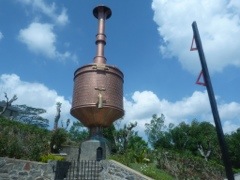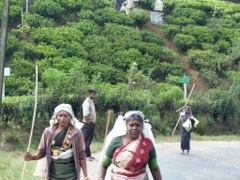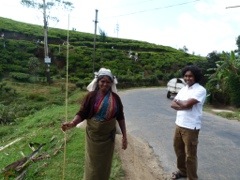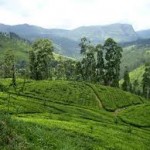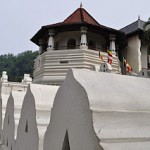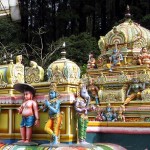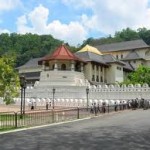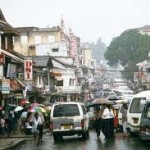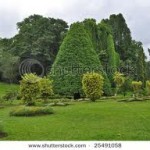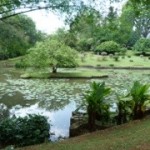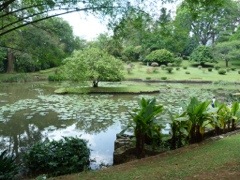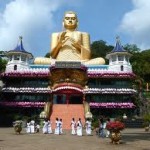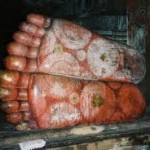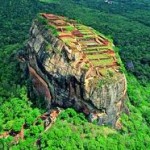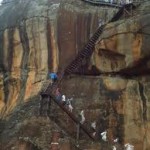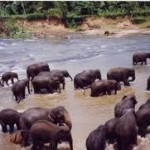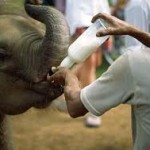Nuwara Eliya, a town situated in the central highlands is the most important place for tea production in all of Sri Lanka. Like English and Scottish tea planters of the oi past, residents of Columbo that can afford to escape the lowlands heat in midsummer by going to the highlands. The drive around tree lined streets through by formal English gardens and 19th century copycat country manor houses is cool and breezy.
Today the region is still dominated by all aspects of tea production and processing. Hillsides are lush with tea in various stages of cultivation and harvesting. Tamil women scurry along the steep inclines with plastic bags strapped to their foreheads which they fill with 15 pounds of new growth tea leaves. They work from early morning to mid-afternoon under the supervision of a strict male overseer. Husbands work pruning, cultivating, weeding and fertilizing the vast hectares comprising the region. Most of the tea is auctioned in Columbo and exported.
